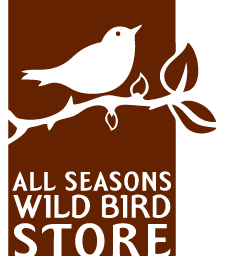Backyard birds
Attracting Orioles
Baltimore Orioles are one of the most stunning and melodious migrants to visit our area. Orioles arrive in the Twin Cities around the first week of May. Therefore, it’s important to have your feeders up by the end of April. In late August, Orioles begin their southward migration to Florida, Mexico, the Caribbean and northern South America. Here are some tips for attracting orioles to your backyard during their summer breeding season.


The OrioleFest™ feeder serves nectar and more.
Nectar Feeders for Orioles
Orioles, like hummingbirds, are nectar eaters. When they first arrive in early spring, orioles feast heartily on high-sugar foods such as nectar and grape jelly.
When selecting a nectar feeder for orioles, make sure it includes perches and a large enough opening to accommodate their beaks. Typically, nectar feeders designed for orioles are orange, unlike those designed for hummingbirds, which are usually red. Our OrioleFest™ feeder includes a nectar well and ports, along with places to offer jelly, half of an orange and mealworms.
Oriole Nectar
Orioles prefer a lower sugar concentration than hummingbirds, so be sure to purchase Oriole Nectar or use a recipe of 1 part sugar to 6 parts water. Packaged nectar comes in concentrate form and quickly mixes with water. To make your own nectar at home, use the following recipe:
Nectar Feeder Maintenance
Plan to empty and clean nectar feeders every three days—sooner if the nectar looks cloudy. Always clean and sanitize your feeder before refilling it. Scrub the feeder with hot water and a mild detergent, or use a 1 part vinegar to 9 parts water solution to kill any residual mold spores.
Grape Jelly
In early spring, orioles will feast ravenously on grape jelly, served in shallow dishes or in feeders that may also include orange halves or nectar. Orioles’ preference for jelly diminishes once nesting starts, then picks up again once their young fledge in mid to late July.


Mealworms
A large part of orioles’ diets consists of insects. This is especially true when they are raising their young, from mid June through late July. If you’ve noticed your orioles are scarce during this time, it’s because you’re not supplying a protein-based food for them. We recommend providing mealworms in a shallow dish feeder to keep orioles coming to your yard throughout the summer. Live mealworms are available in our stores in various quantities and last weeks in your refrigerator. We also stock dried mealworms, which may be served as-is or mixed with a bit of nectar.
Oriole Facts and Figures
Nesting Habits
Female orioles build hanging, teardrop-shaped nests high up in trees such as cottonwoods, maples and elms. Their woven nests consist of milkweed down, dog hair, weed fibers, wool and many other fibrous materials. You can encourage nesting orioles to visit your yard by hanging a Best Nest Builder™ ball as a source of nesting material and by providing appropriate food choices throughout the summer.
Orioles incubate 4–5 eggs over 11–14 days. They have only one brood each year and the nestlings fledge 11–14 days after hatching.
Male orioles do not achieve their brilliant adult plumage until the fall of their second year. Until that point they’ll resemble a female oriole with drabber pale orange colors, often with slight shading around the head.
Midwestern Oriole Species
Here in Minnesota, Baltimore Orioles are common. However, the Midwest also hosts oriole species such as Bullock’s and Orchard Orioles.

Baltimore Orioles
Baltimore Orioles measure around 7.5 inches long and have a wingspan of 9–12 inches. Males are bright orange with a black head and wings; females lack the black head and are a pale orange to olive color with white wing bars.

Bullock’s Orioles
These partially-hooded orioles have a black crown, nape and back, while the rest of their head and underparts are an orange-yellow. Females are paler and lack black feathers. Juvenile males are slightly brighter than females and have white wing bars. Bullock’s Orioles are primarily found farther south in the Great Plains, but have been known to travel northward.

Orchard Orioles
At 6–7 inches long, Orchard Orioles are smaller than Baltimore Orioles. Males are a deep chestnut or red color, versus orange, and have more black on their backs than Baltimore Orioles. First-year males and females are more of a greenish-yellow than the pale orange Baltimore Oriole. Orchard Orioles are found throughout southern Minnesota and the Twin Cities.

